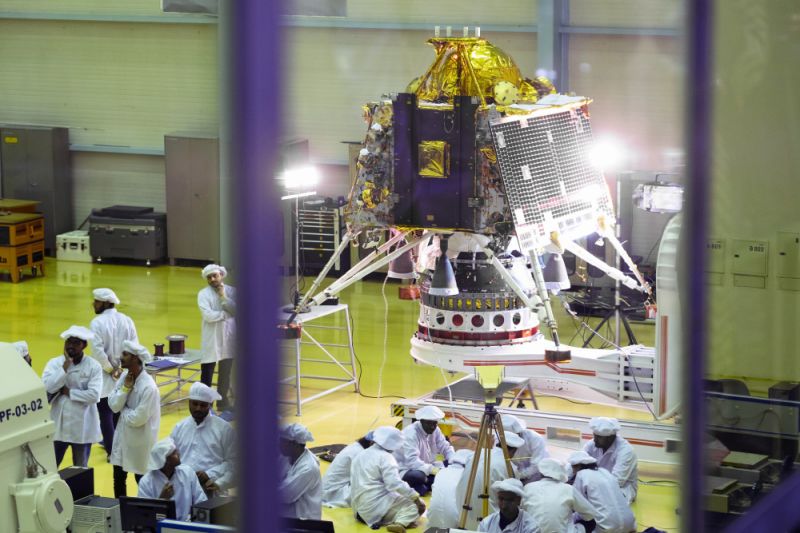

(Bloomberg) — India was forced to put on hold its second mission to the moon after discovering a glitch at the last moment, a setback to its ambitious plan to become the first nation to land on the south pole of Earth’s closest neighbor.
The mission, called Chandrayaan-2, which means “moon vehicle” in Sanskrit, was canceled 56 minutes before its scheduled launch early Monday morning because of “a technical snag,” the Indian Space Research Organisation said. ISRO, the nation’s equivalent of NASA, will reschedule the launch. A spokesman didn’t return calls seeking details about the new timeline and the glitch.
The scheduled landing on Sept. 6 would have added India to an elite club of the former Soviet Union, the U.S. and China in making a soft landing on the moon, in which vehicles touch down without damage. Space-faring nations, as well as billionaires Jeff Bezos, Elon Musk and Richard Branson, are competing in an unofficial space race, from launching satellites to sending astronauts and paying tourists into space.
It may take several months for India to be able to attempt a launch again, said Susmita Mohanty, co-founder and chief executive officer of Earth2Orbit, a Bangalore-based space startup that has worked with Alphabet Inc.’s Google and ISRO.
“If you find a snag, it is better to go fix it than launch it and regret later,” Mohanty said. “These missions are fairly complex, which is why no nation has successfully landed on the Moon since 1972, except China.”
India has specialized in low-cost space launches since the early 1960s, when rocket sections were transported by bicycle and assembled by hand inside St. Mary Magdalene Church in Thumba, a fishing village near the tip of the Indian peninsula. The nation sent an orbiter to Mars at about a 10th of the cost of NASA’s Maven probe, and in 2017 it launched a record 104 satellites.
ISRO’s next priority is the $1.4 billion Gaganyaan mission, which aims to put three Indian “gaganauts” — at least one of which will be a woman — into orbit. The plan, made public in a surprise announcement by Prime Minister Narendra Modi last year, will put the South Asian nation on track to become the fourth to send humans to space.
The launch of the moon mission, which was scheduled to take place at a tiny barrier island in southeastern India, attracted more than 100 reporters. Two Chandrayaan modules — an orbiter and a lander — were stacked together inside a launcher equipped to lift heavy satellites into orbit, while a third module, the lunar rover, was supposed to roll out on landing and operate for at least 14 days on the surface.
The aim of the mission is to explore virgin territory on the lunar surface and analyze crust samples for signs of water and helium-3. That isotope is limited on Earth yet so abundant on the moon that it theoretically could meet global energy demands for 250 years if harnessed. India’s first mission to the moon — Chandrayaan-1 — was launched in October 2008, completed more than 3,400 orbits and ejected a probe that discovered molecules of water in the surface for the first time.
(Updates with comment from industry expert starting in fourth paragraph.)
–With assistance from Shivani Kumaresan.
To contact the reporters on this story: Anurag Kotoky in New Delhi at [email protected];Ganesh Nagarajan in Chennai at [email protected];Zoya Khan in New York at [email protected]
To contact the editors responsible for this story: Young-Sam Cho at [email protected], Ville Heiskanen, Angus Whitley
<p class="canvas-atom canvas-text Mb(1.0em) Mb(0)–sm Mt(0.8em)–sm" type="text" content="For more articles like this, please visit us at bloomberg.com” data-reactid=”35″>For more articles like this, please visit us at bloomberg.com
©2019 Bloomberg L.P.











Add Comment